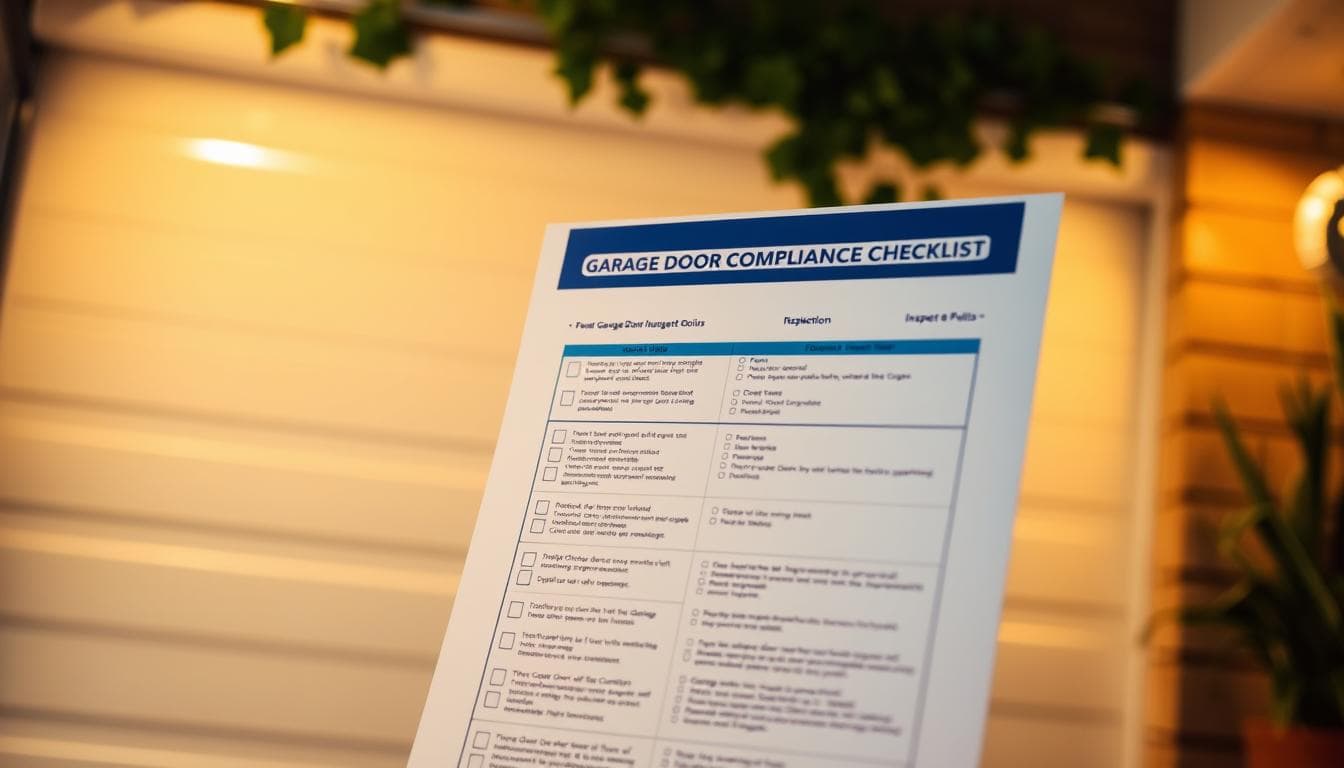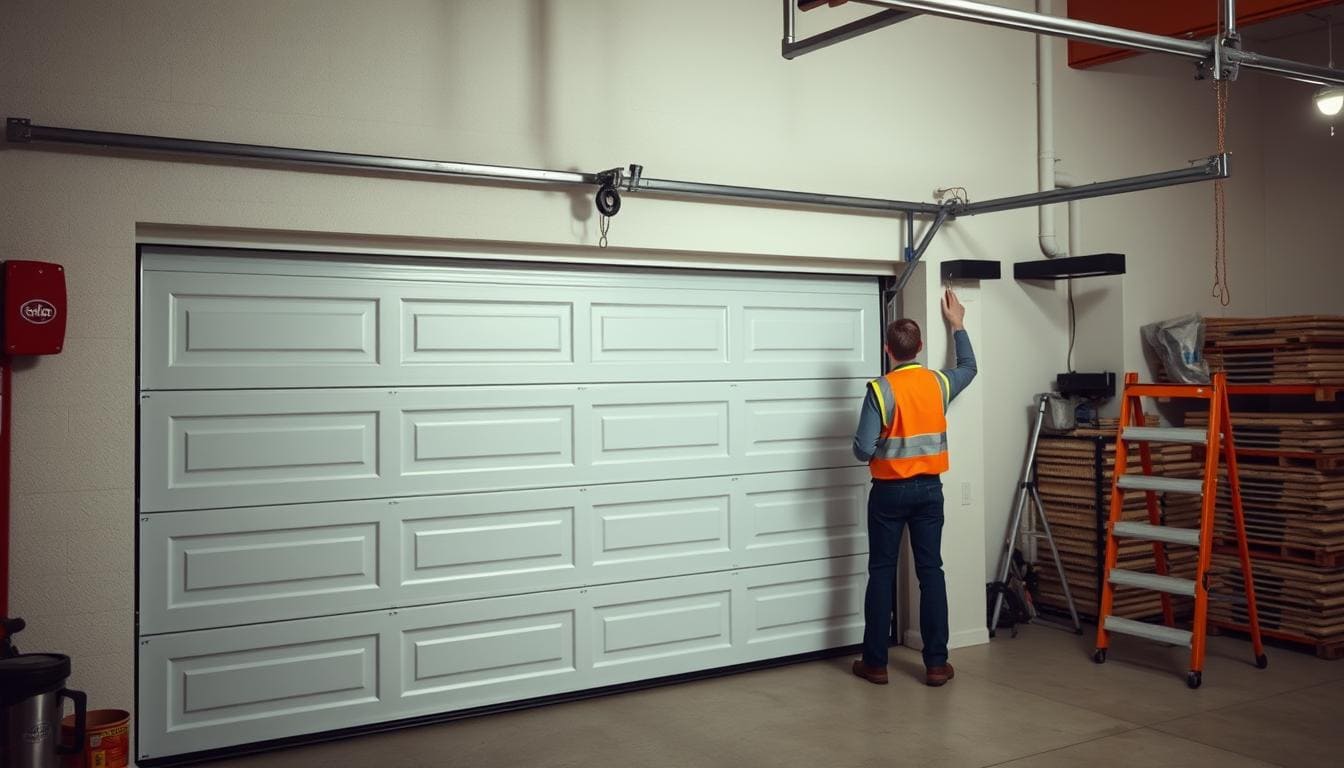Garage Door Regulations Australia: What Homeowners Need to Know
Recent data shows over 3,000 hospitalisations occurred in just one year due to incidents involving these garage door solutions. With more than five child fatalities annually linked to these accidents, health safety standards aren’t just paperwork—they’re lifesavers. Why risk your family’s security when simple upgrades could enhance safety and prevent tragedy?
Modern garage door setups now require features like automatic reversal technology and motion sensors. These aren’t luxury add-ons but mandatory protections under current Australian regulations. Whether you’re installing new garage doors or maintaining existing structures, compliance with these regulations matters more than ever, especially considering the range of options available from various manufacturers.
Did you know different states apply these regulations uniquely? While core principles remain consistent, local variations exist. Staying informed helps avoid penalties while keeping loved ones secure. Regular installation maintenance checks ensure mechanisms function properly, reducing risks of malfunctions in door installations and ensuring safe access to your buildings.
Beyond safety, compliant garage systems boost property value and lower insurance costs. Think of it as an investment that pays off in peace of mind. This guide simplifies complex regulations into actionable steps—no jargon, just clear advice for Australian households looking to enhance safety with reliable garage door solutions, including tilt and panel options.
Key Takeaways
* Over 130 weekly hospitalisations highlight urgent need for safety compliance
* Automatic reversal systems and sensors are now mandatory nationwide
* Homeowners legally responsible for maintenance and upgrades
* State-specific variations exist within national safety framework
* Compliant systems reduce risks while increasing home value
Understanding Garage Door Regulations in Australia
Imagine a system that protects your family while adding value to your home—that’s what modern entry systems achieve when properly regulated. Let’s explore how these rules work and why they matter for every household.
While most regulations focus on safety, installation, and operation, some guidelines may also influence garage door storage solutions, ensuring that stored items do not obstruct the door’s movement or compromise safety standards.
How Safety Rules Shape Our Homes
Australia’s safety net for households involves two key players: SafeWork NSW and Standards Australia. Together, they’ve created guidelines like AS/NZS 4505:1998, which details how garage doors and entry points should be built and installed. Think of these as recipes—follow them correctly, and you’ll get reliable performance for years, ensuring your garage door meets all necessary safety and security requirements, as well as the relevant regulations.
Why Compliance Matters Beyond Paperwork
Did you know proper installation of garage doors affects insurance claims? The building codes for garage door installation ensure mechanisms can handle emergencies. Regular checks aren’t just about avoiding fines—they prevent 84% of common malfunctions reported nationwide, helping customers maintain compliance with health safety regulations and enhancing access to safety features. By choosing a reputable manufacturer, homeowners can ensure their doors meet these critical standards.
Here’s what smart homeowners do to enhance their garage security:
* Schedule annual professional inspections
* Test auto-reverse features monthly
* Keep maintenance records for insurance
Why gamble with safety when compliance offers multiple benefits? It’s simpler than you think—most updates take less than a day but provide decades of protection for your garage and home, ensuring your doors are aligned with Australian standards.
Essential Safety Standards and Features for Garage Doors
Every year, hidden dangers in buildings cause preventable accidents. Modern garage door entry systems now come with life-saving tech that acts faster than human reflexes. Let’s explore the non-negotiable safety features that keep families safe and ensure your garage doors meet the latest Australian standards and security requirements for access and compliance.
In Australia, garage door regulations are designed to ensure safety, functionality, and compliance with national standards for both residential and commercial doors. Homeowners need to understand that their doors must meet specific design and installation regulations, particularly in relation to wind resistance, materials, and operational safety features. The manufacturer plays a key role in producing safe doors that adhere to these regulations, offering a range of models to suit different buildings and property styles.
Whether you are installing new garage doors or replacing an old door, it is important to select from a range that meets local compliance requirements. A well-installed door not only boosts security but also reduces potential hazards, as faulty doors can cause accidents. Modern garage doors come with a range of safety features, such as automatic reversal systems, ensuring that the door stops and retracts when an obstruction is detected. By staying informed about regulations, homeowners can ensure that their door operates safely, lasts longer, and meets all legal obligations while enhancing the overall look and performance of their doors.
Mandatory Safety Features
Today’s garage door systems must have three core protections. First, auto-reverse tech stops and reverses direction if something blocks the path. Imagine a child’s toy left in the doorway—the system detects it instantly.
Second, invisible beams create a protective shield across the opening. If broken during closing, the beam triggers immediate reversal. Third, manual release handles let you operate the system during power cuts. These aren’t suggestions—they’re law under AS/NZS 2215-09 regulations, ensuring your garage doors are compliant and secure. Proper installation by a qualified manufacturer’s team is essential to meet these requirements.
| Feature | Function | Check Frequency |
|---|---|---|
| Auto-Reverse | Detects obstructions | Monthly |
| Safety Beams | Creates invisible barrier | Quarterly |
| Manual Release | Enables emergency operation | Bi-Annually |
Emergency Release and Automatic Reversal Systems
What happens when power fails during a storm? The emergency release lets you manually open or close the entry point. It’s usually a red handle—practice using it before emergencies strike.
Automatic reversal works through sensors checking resistance. If something gets caught, the system reverses within milliseconds. Combine this with durable steel panels, and you’ve got protection that lasts decades.
Regular testing matters. Try closing your garage door system with a cardboard box in the path. Does it reverse properly? If not, call a technician immediately. Your family’s safety depends on these features working flawlessly.
Navigating Garage Door Regulations Australia Compliance
Getting your property’s garage door entry systems right starts with smart choices. Did you know selecting the wrong type of door could void your home insurance? The National Construction Code specifies every detail—from weather resistance to proper sizing requirements for doors. Think of it like buying shoes: one size doesn’t fit all. Ensuring your garage doors meet safety regulations is crucial for compliance with Australian standards.
Professional setup makes all the difference. A certified team of technicians follows manufacturer guidelines while adapting to local conditions. Coastal buildings need corrosion-resistant steel materials, while bushfire zones require specific heat ratings. Proper installation and maintenance of steel doors help enhance security and prevent 73% of garage door warranty claims on your panel systems.
Keep those paperwork ducks in a row. Maintenance logs and installation certificates prove compliance during inspections or claims. Ever tried selling a house without these records? Buyers often request them before signing contracts, especially in the construction industry.
Local councils add their own twists to national rules. Some ban certain colors in heritage areas, while others limit automated systems near footpaths. A quick call to your municipal office saves headaches later. Why risk fines when a 10-minute check clarifies everything?
Modifications demand caution. Even adding windows or changing handles needs expert approval. Remember—unauthorized changes shift liability to you if accidents occur. Stick with certified upgrades that maintain protection standards and health safety in your space.
Insurance companies scrutinize compliance closely. Non-approved systems might leave you covering repair costs after storms or break-ins. Regular audits spot issues early, keeping your coverage intact and family secure.
Design, Installation and Maintenance Best Practices
What separates a reliable entry system from one that becomes a safety hazard? The answer lies in smart planning and consistent care. Let’s explore how thoughtful design choices and proper upkeep keep your home secure while maximising system lifespan.
Getting It Right From the Start
Certified technicians bring more than tools—they bring peace of mind. By following manufacturer specifications precisely, professionals ensure smooth operation and compliance with safety regulations for your garage door systems. Coastal homes might need stainless steel components, while bushfire-prone areas require heat-resistant materials to meet health safety standards for all types of doors.
Space constraints often dictate design choices for garage doors. Tilt systems work best in tight spaces, while sectional types suit larger openings. Modern aluminium frames offer rust resistance, and insulated panels help regulate temperatures. Ever considered how your daily usage affects wear patterns on your garage door?
Garage Door Regulations Australia
Regular care prevents 80% of common issues with garage doors. Try this simple routine:
* Lubricate hinges every 3 months
* Test auto-reverse monthly
* Schedule professional checks annually
Warranties demand proof of proper maintenance. Why risk voiding coverage with DIY fixes? Keep service records organised—they’re golden during insurance claims or property sales. Most manufacturers require documented care to honour guarantees for all types of buildings.
Seasonal changes impact performance. Summer heat expands metal tracks, while winter cold stiffens lubricants. Adjust tension springs biannually and clear debris from sensors quarterly. Small efforts today prevent big headaches tomorrow.
Compliance Insights Across NSW, Victoria and Beyond
Navigating state-specific rules doesn’t have to feel like solving a puzzle. Let’s break down how different regions approach safety standards while keeping homes secure.
Navigating compliance standards across NSW, Victoria, and other Australian regions requires a clear understanding of how regulations apply to every entry point — from residential door installations to commercial doors used in high-traffic facilities. In NSW, building codes often specify the type of doors that can be fitted in fire-prone areas, while Victoria emphasizes safety features in every door used in public buildings. Businesses must ensure that doors meet accessibility requirements, allowing smooth passage for all users.
In both states, compliance checks often focus on whether each door is fitted with the correct hardware, as non-compliant doors can lead to penalties. Whether it’s automated doors in retail stores or heavy-duty security door systems in warehouses, the goal is consistent — to ensure every door and all doors installed follow the latest Australian Standards. By understanding these regional variations, businesses can confidently install doors that are not only functional but also fully compliant.
NSW’s Detailed Documentation Demands
New South Wales takes paperwork seriously. The Design and Building Practitioners Regulations 2020 require homeowners to keep detailed records of installations. Think of it like a medical history—but for your property’s entry points. Certified professionals must sign off on work, ensuring every component meets national benchmarks.
Victoria’s Clear-Cut Guidance System
Across the border, the Victorian Building Authority simplifies compliance through online tools. Their portal offers checklists tailored to heritage homes versus modern builds. Did you know some suburbs restrict automated systems near footpaths? A quick consultation with local experts prevents costly mistakes.
Australian Standards bridge regional differences. AS 1428.1:2021 ensures accessible designs, while AS 4100:2020 governs structural integrity. These shared rules mean compliant systems in Sydney work safely in Melbourne too. Regular audits help maintain protection as construction laws evolve.
Why stress about variations? Most certified installers understand both state and national requirements. Book a compliance check today—it’s simpler than renewing your driver’s licence!
FAQ
Why do safety standards matter for overhead entry systems in homes?
Safety standards protect families from accidents and ensure systems like garage doors work reliably. They address risks like entrapment, mechanical failures, and unauthorised access while meeting national building codes and australian standards for garage door installations. Compliance with these regulations is essential for all types of buildings and door systems.
What essential mechanisms must residential overhead entry systems include?
Australian laws require auto-reverse sensors, manual release handles, and tamper-resistant brackets. Systems must also use durable materials like steel or reinforced aluminium to withstand harsh weather and ensure security in all types of buildings. This includes a range of various panel designs that fit different space requirements.
How often should I check my overhead entry system’s safety components?
Test auto-reverse features monthly by placing an object in the door’s path. Schedule professional inspections yearly to verify spring tension, track alignment, and sensor functionality as part of your installation maintenance routine for your garage door. This ensures continued access and safety.
Are there differences between NSW and Victoria’s building codes for these systems?
Yes. NSW requires wind-rated designs for coastal areas, while Victoria emphasises fire-resistant materials in bushfire zones. Both states mandate child-safe emergency release mechanisms to ensure compliance with health safety regulations for all garage door systems. Manufacturers must adhere to these specific requirements.
Can I install an overhead entry system myself while staying compliant?
Basic panel doors might allow DIY installation, but motorised systems with smart features require licensed technicians. Always check your local council’s approval process before starting work on your garage door to ensure compliance with local regulations.
What happens if my overhead entry system doesn’t meet current standards?
Non-compliant systems risk voiding home insurance, failing property inspections, or causing injuries. Upgrading to modern safety features like infrared sensors often resolves these issues and ensures your garage doors meet the necessary requirements. This helps maintain a safe environment for your family and property.



